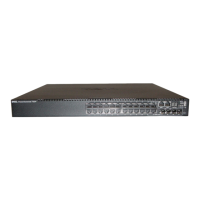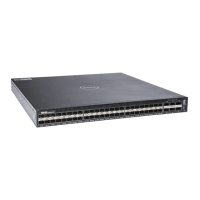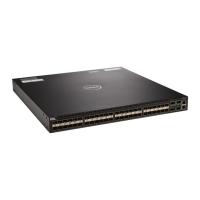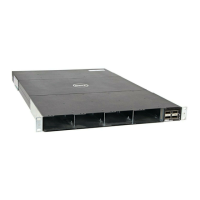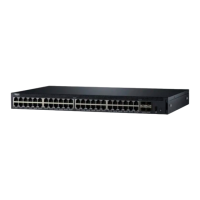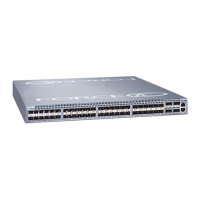Managing IPv4 and IPv6 Multicast 1343
What Is PIM?
The Protocol Independent Multicast protocol is a simple, protocol-
independent multicast routing protocol. PIM uses an existing unicast routing
table and a Join/Prune/Graft mechanism to build a tree. Dell Networking
series switches support two types of PIM: sparse mode (PIM-SM) and dense
mode (PIM-DM).
PIM-SM is most effective in networks with a sparse population of multicast
receivers. In contrast, PIM-DM is most effective in networks with densely
populated multicast receivers. In other words, PIM-DM can be used if the
majority of network hosts request to receive a multicast stream, while PIM-
SM might be a better choice in networks in which a small percentage of
network hosts, located throughout the network, wish to receive the multicast
stream.
Using
PIM-SM as the Multicast Routing Protocol
PIM-SM is used to efficiently route multicast traffic to multicast groups that
may span wide area networks and where bandwidth is constrained. PIM-SM
uses shared trees by default and implements source-based trees for efficiency.
PIM-SM assumes that no hosts want the multicast traffic unless they
specifically ask for it. It initially creates a shared distribution tree centered on
a defined “rendezvous point” (RP) through which source traffic is relayed to
the ultimate receiver. Multicast traffic sources first send the multicast data to
the RP, which in turn sends the data down the shared tree to the receivers.
Shared trees centered on an RP do not necessarily provide the shortest or
most optimal path. In such cases, a Dell Networking PIM-SM router adjacent
to the host switches to the shortest path upon seeing the very first multicast
data packet.
Many IP multicast applications, such as those that handle real-time
dissemination of financial information, require high performance. Multicast
group membership management (IGMP), unicast routing protocols (OSPF,
RIP), and multicast routing protocols are all required to enable end-to-end
multicast capabilities. The RP is a critical function for PIM-SM deployments.
RP redundancy is always recommended. In a shared-tree model, multicast
traffic from the multicast source is routed via the RP. If the RP goes down, the
multicast receivers do not receive traffic until the RP comes up again. In
general, more than one RP is configured (for a group range) to provide RP
redundancy. The PIM-SM router acting as a BSR advertises the list of
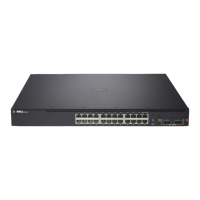
